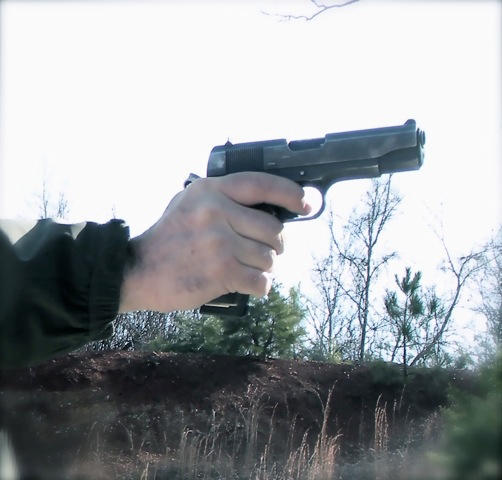 |
Back in February I wrote a column on “Foundations.” It covers various elements, physical and mental. Your physical stance is the foundation for everything above. The firing grip is the foundation for everything beyond the wrist. Today I’m back on the firing grip, and its importance.
When drawing the pistol, especially under stress, most shooters rush the act of gripping the pistol. Without the proper grip the rest of the presentation and following shots are going to be less than good. Or, you have to take extra time to establish control over the pistol to manipulate it correctly - because the improper grip created a malfunction. Regardless of the results, it ain’t good enough. We need to be at least “good” – “great” is even better; less than “good” may not be effective, and it’s certainly not efficient. There are parts of the draw stroke that can be done “fast” - I don’t even like using that term. Any time you try to go fast you’ll go too fast and accumulate mistakes. “Full speed” is maybe a better way to think about it. You cannot rush the grip. The proper grip is the foundation for everything that follows.
When I take time to establish the correct grip first, no matter how long that may require, it pays off exponentially. The rest of the draw is much more efficient, almost effortless. Without the correct grip everything else will be shaky – you’re trying to force it as opposed to the draw occurring naturally.
To grip the semi-auto I hit the back of the grip a little low, below the back strap or beaver tail. Then the hand slides up the back of the pistol, or it slides downward in relationship to your head. Once the web between thumb and first finger is indexed the three bottom fingers wrap and grip the pistol. The trigger finger is straight – unless working retention devices – and the thumb is on top of any safety levers. With the proper grip established the pistol can “bounce” out of the holster and into the support hand with the greatest of speed. (Having a pistol that actually fits your hand is mandatory.)
I’ve also run a few students through this drill. We’ll use a timer to see how long it takes to complete the draw and fire an accurate hit. One series is done with the shooter taking time to establish the proper grip, and then pushing the speed onto target for the shot. The other is with them trying to do everything fast. By slowing down and establishing the proper grip in the beginning – controlling the pace – all shooters score better times and accuracy.
To learn any of this – and especially develop the proper timing and rhythm of one action to another – requires practice. The other day I began counting how many times I drew my pistol during the day. Sometimes I’m drawing onto a target while other repetitions are to the Low-Ready position. I stopped counting at 120. Multiply that by the past twenty or more years and it’s a big number. I’m getting “more better,” but also discovering there’s room for lots of improvement. Get a dummy pistol, a safe area to practice with a real pistol or do it at the range before shooting – and start learning how to draw -- starting with your grip.
Tiger McKee is director of Shootrite Firearms Academy, located in northern Alabama. He is the author of The Book of Two Guns, AR-15 Skills and Drills, featured on GunTalk’s DVD, “Fighting With The 1911 and has regular columns in Gun Digest and American Handgunner.
http://www.facebook.com/pages/Shootrite-Firearms-Academy/156608611038230?ref=ts
